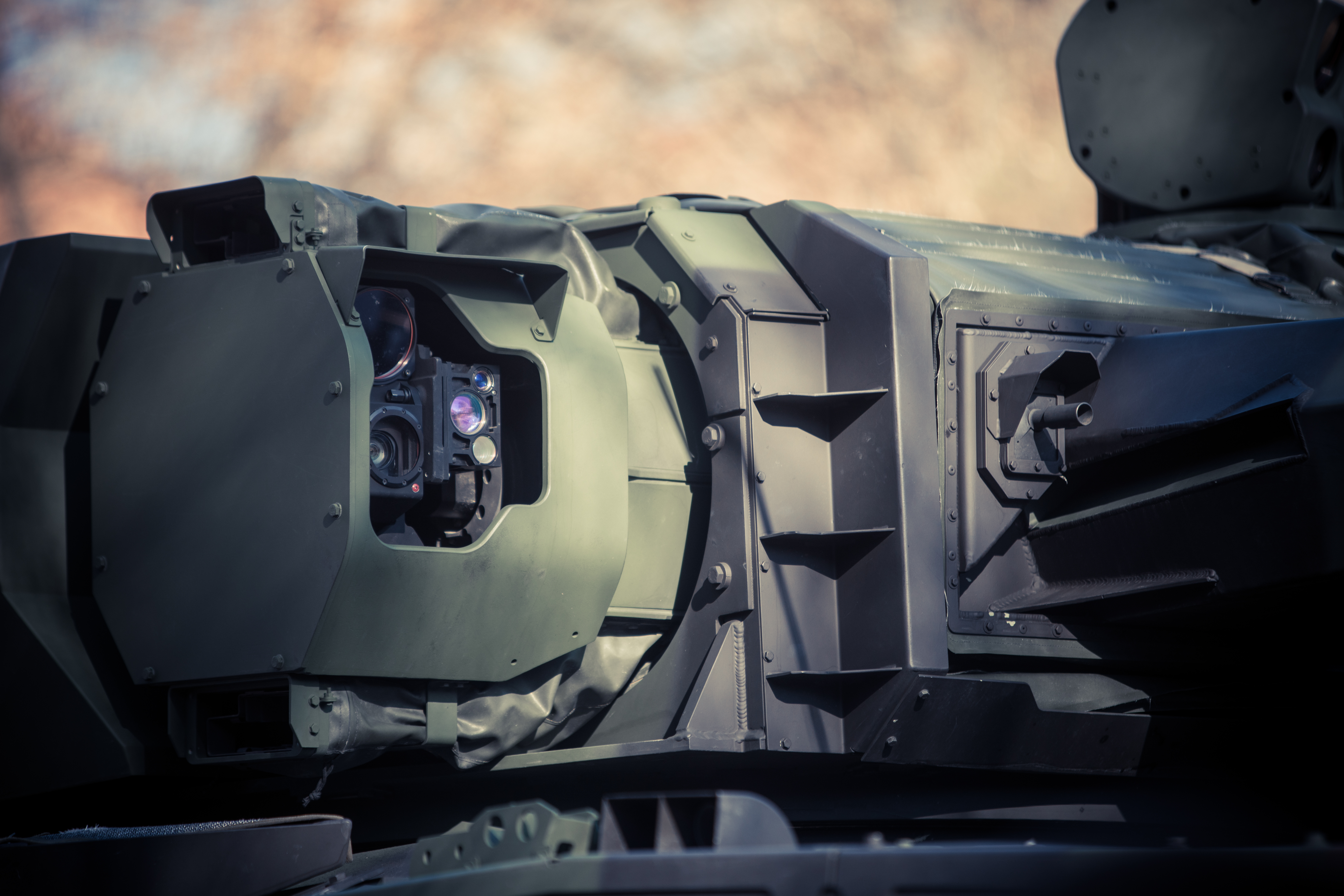.jpg)
By Stephen Borgna
Marketing Communications Specialist
The rapid evolution of high-speed applications in military and aerospace is slated to completely revolutionize the capabilities of modern defense and aerospace systems. But this progress isn’t happening in a vacuum.
Driving these advancements are growing demands for processing large volumes of data in real time, managing complex operations autonomously, and smoothly integrating systems in hostile and high-stakes environments. Meeting these demands is required to continue to reach technical breakthroughs in next-generation high speed technologies including Artificial Intelligence (AI), C5ISR systems, smart weaponry, and military data processing.
I believe the next generation of high-speed capabilities is right on the horizon. However, these advancements come with substantial challenges, such as the need for ultra-reliable connectivity, low-latency data exchange, and robust hardware capable of operating in harsh conditions. Let’s take a closer look at where things stand with these emerging mission-critical technologies.
Artificial Intelligence
.jpg)
Artificial Intelligence has come a long way in just the past couple of years. There are exciting applications happening in military AI capabilities today spanning surveillance, target recognition, predictive maintenance, autonomous mission planning, and more.
Modern AI systems deployed in defense environments require immense computational power to process sensor data, detect patterns, and execute algorithms with minimal latency. For example, emerging AI-driven Unmanned Aerial Systems (UAS) are designed to operate in contested environments, relying on advanced machine-learning models to make split-second decisions. A critical component of these systems is the ability to interface with high-speed data networks that ensure real-time communication between ground stations, satellites, and deployed units.
The U.S. Department of Defense (DoD) sees the operational value of next-generation UAS capabilities and is actively funding research on AI-based drone swarm technology, where groups of autonomous drones operate collaboratively. These systems require Ethernet networks and computing infrastructures that can handle terabytes of data per second that prioritize precision, speed, and resiliency. AI models like Generative Pre-trained Transformer (GPT) derivatives are also being adapted for military applications, enabling real-time language translation and operational analysis in multilingual settings. However, one of the major challenges in the years ahead is deploying these AI systems into small, lightweight embedded systems that meet stringent size, weight, and power (SWaP) constraints without sacrificing computational efficiency.
C5ISR

Command, Control, Communications, Computers, Cyber, Intelligence, Surveillance, and Reconnaissance (C5ISR) is the backbone of modern military operations. These systems aggregate data from sensors, drones, satellites, and ground-based units to provide a comprehensive picture of the operation area. High-speed interconnects and robust computing infrastructures are critical to achieving the low latency and reliability these systems demand.
To fully understand the scope of C5ISR, one must take into account its evolutionary counterparts: C2, C4ISR, and C6ISR.
C2 (Command and Control) is the foundational concept, focusing on the authority and processes necessary to plan, direct, and coordinate military operations. It emphasizes the hierarchy and communication channels essential for managing forces. When Computers and Communications are added, the system evolves into C4ISR, incorporating advanced digital infrastructure to connect forces and support network-centric warfare. C5ISR further expands this scope by adding Cyber capabilities, addressing the need for cybersecurity and resilience in modern electronic warfare environments. Finally, C6ISR adds Combat Systems, integrating offensive and defensive combat mechanisms directly into the broader operational framework.
There are exciting multi-domain C5ISR architectures that integrate space-based platforms with terrestrial and maritime units currently in development. These architectures utilize advanced communication protocols such as 100G Ethernet and PAM-4 signaling to enable the smooth exchange of data. One of these projects is the U.S. Army’s TITAN ground station program that’s designed to consolidate data from multiple sensors in the operational space into a unified interface. TITAN aims to enable commanders to leverage artificial intelligence and edge computing to process battlefield intelligence in real-time. The first TITAN prototype was delivered to Joint Base Lewis-McChord in Washington in July 2024.
To meet the next generation demands of complex systems such as TITAN, the data links within C5ISR systems must operate reliably under high thermal stress, electromagnetic interference (EMI), and environmental factors like vibration and shock. Hardware must also adhere to open standards such as Sensor Open System Architecture (SOSA) to enable interoperability and flexibility for future upgrades.
Smart Weapon Systems

Smart weapon systems aren’t a new concept. Brought to prominence in conflicts such as the first Gulf War, weapons such as precision guided missiles, laser-guided bombs and loitering munitions ushered in a new era of precision targeting and adaptability in military technology.
These systems utilize onboard computing, GPS guidance, and advanced sensors to identify and engage targets with minimal human intervention.
Smart weapon systems have taken a leap in recent years with technology such as hypersonic weapons and drone swarms. This leap is made possible by high-speed data transfer between the weapon system and its control unit. Smart weapons require robust Ethernet-based communication for receiving targeting updates in-flight and transmitting sensor data back to operators.
One major example of next-generation smart weapon capabilities is the U.S. Air Force’s AIM-260 Joint Advanced Tactical Missile (JATM), a next-generation air-to-air missile designed to replace or supplement the decades-old AIM-120 AMRAAM. The AIM-260 is expected to feature advanced data links and targeting capabilities for enhanced engagement of airborne threats. This new missile system is intended to be integrated with platforms including the F-22 Raptor, F/A-18E/F Super Hornet, F-35 Lightning II, and F-15EX Eagle II.
Ongoing research into integrating AI algorithms directly into the weapon's onboard processors also points to a need for ultra-low power yet high-performance computing solutions. As these technologies mature, they will play a pivotal role in maintaining air superiority in contested regions.
Military Data Processing

The digital transformation of military operations has resulted in an exponential increase in the volume of data collected from various sources. High-speed data processing is essential for making sense of this information and ensuring that actionable intelligence is available in real-time. Modern military data centers and mobile command units are equipped with advanced processors and network switches to manage terabytes of data per second.
One prominent development is the shift toward edge computing in military applications. Edge computing allows data processing to occur closer to the source, reducing latency and bandwidth requirements. This is particularly critical for mobile operations, where connectivity to centralized data centers may be limited. The Navy’s Distributed Maritime Operations (DMO) concept, for instance, relies on edge computing to enable decentralized command and control across vast oceanic territories.
Equally important is the ruggedization of hardware to ensure performance in harsh-environment conditions. From extreme temperatures to electromagnetic interference, military data processing units must withstand a wide range of challenges while maintaining operational reliability.
Enabling Next-Generation High Speed Systems with RaptorLink

New from Amphenol Aerospace, the RaptorLink 64X50 Ethernet Switch is designed for the next evolution of high-speed applications in military and aerospace. The RaptorLink integrates dual 32-channel Ethernet switch chips capable of NRZ speeds up to 25G and PAM-4 speeds up to 50G. This configuration supports multiple bandwidth-intensive applications, from real-time AI inference models to high-throughput C5ISR systems.
The switch is built on the SOSA-aligned VITA-91 standard, ensuring compatibility with future open systems architectures. Additionally, the RaptorLink's onboard quad-core ARM processors and DDR4-SDRAM offer robust management capabilities, including support for Time-Sensitive Networking (TSN) and MACsec encryption. These features are essential for maintaining data integrity and synchronization in complex multi-domain operations.
The RaptorLink is also fully ruggedized to meet MIL-STD-461E standards, with operating temperatures ranging from -40°C to 85°C and the ability to withstand high vibration and shock loads. Its compact 3U VPX form factor makes it ideal for deployment in SWaP-constrained environments, while its redundant IPMB interfaces provide fail-safe operation.
Visit Amphenol Military High Speed Integrated Solutions for more information on RaptorLink and Amphenol's other industry-leading harsh environment Ethernet switches.